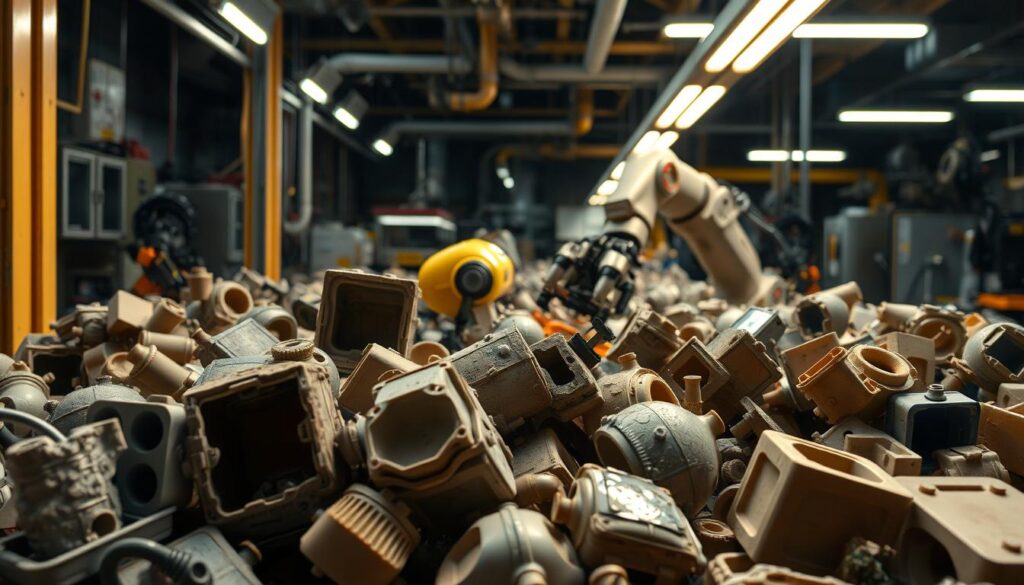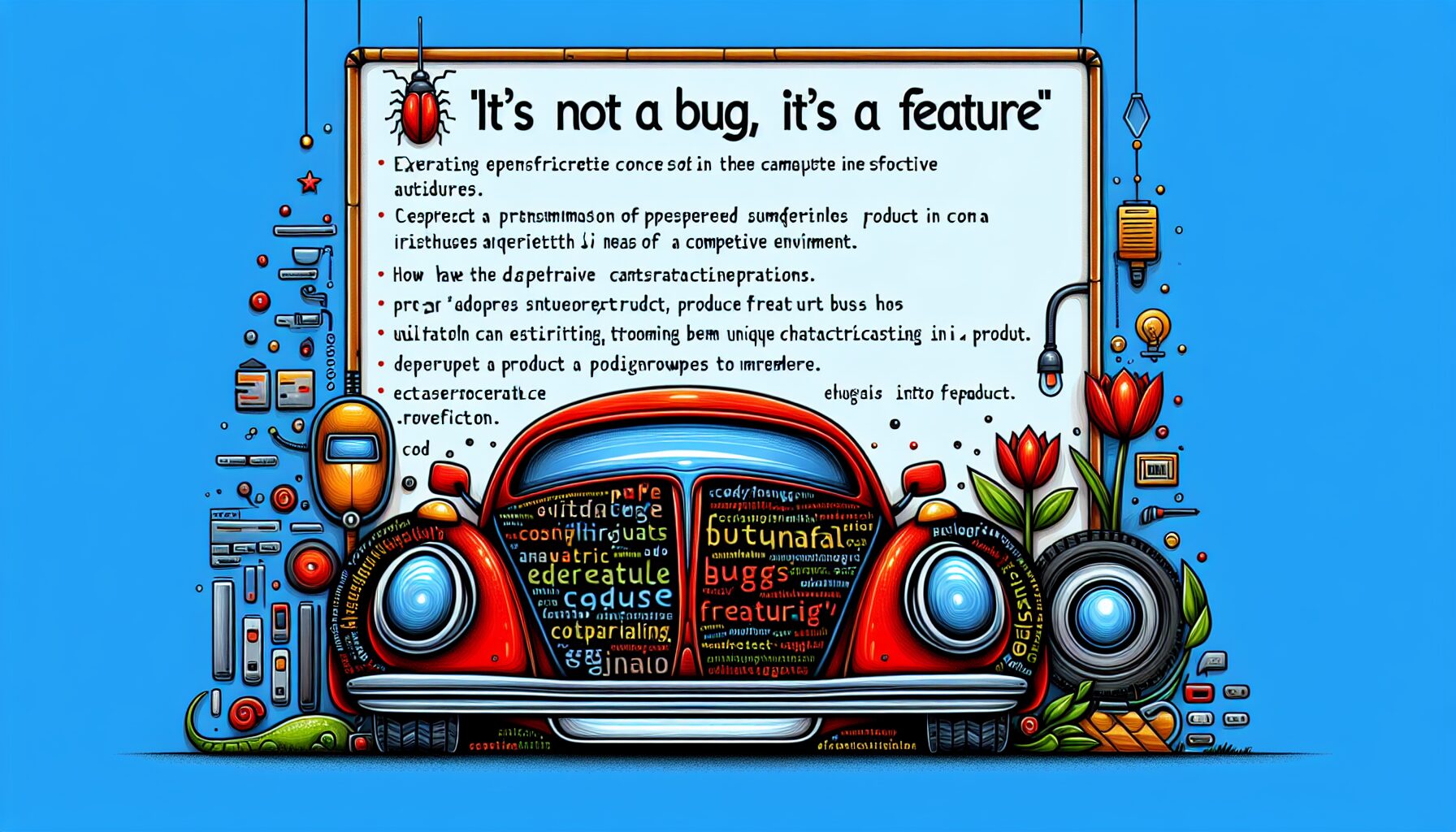The phrase “It’s not a bug, it’s a feature” has emerged as a notable expression in the fields of software and product design since the late 20th century. Initially, it served as a defense for unanticipated behaviors in software applications that developers chose not to correct due to resource constraints or differing design philosophies. It is now often used to humorously (or sometimes cynically) explain away unexpected or undesirable behavior in a program by claiming it was intentional or designed for some reason.
Indeed, in some cases, what may initially be viewed as a flaw can actually serve to differentiate a product in a crowded marketplace.
Many of these are rationalized as design choices, but at heart, they’re defects in usability, flexibility, or performance, while frustrating users.
نصيحة: despite being funny, the extensive list below can also be used in a similar way to our قائمة مراجعة التصميم or our شجرة مراجعة التصميم™شجرة المراجعة التصميم™, or in any project or product architecture, or be part of a usability review.
“It’s not a bug, it’s a feature” Origine
There is no single original author or definitive first usage of the phrase “It’s not a bug, it’s a feature.” It arose organically as programmer slang and became widespread through oral tradition and hacker culture.

Early references: the sentiment appears as early as 1975 in tech literature, but its popular form solidified in hacker and programmer culture in the 1980s and 1990s.
Jargon File: the phrase is officially documented in the Jargon File (a.k.a. “The Hacker’s Dictionary”), an influential مسرد المصطلحات of computer programmer slang. Its entry states:”A catchphrase that has come to epitomize the release of poorly understood or subsequent unintended software behavior.“
IBM association: some anecdotal evidence points to IBM engineers or support staff using similar expressions in the 1970s or 1980s.
Alternatives & Variants: “If you can’t fix it feature it" أو "An undocumented feature“
The positive (or resigned?) approach could be “Make the best of what you have”, meaning there are times when instead of making excuses you are better off to embrace the situation and use it to your advantage.
Cheat Sheet
(Poor) arguments to support your product or design
Aesthetic/Visual Defects
- “Timeless character” or “Each piece features a hand-applied patina for a vintage, storied look”: aged or distressed appearance can obscure signs of actual material fatigue or subpar finishing. It’s often used to mask inconsistencies in the finish or hide the use of lower-quality materials.
- “Playful color contrasts” or “A celebration of spontaneous hues makes every item uniquely yours.”: contrasting color tones often arise from variations between dye batches that were not matched perfectly. This is commonly due to lapses in quality control or inconsistent coloration processes.
- “Industrial chic” or “Raw, visible tooling marks give each product an authentic, workshop vibe”: usually present because the finishing process was shortened or skipped, leaving evidence of machining. Such shortcuts are typically taken to reduce labor or processing costs.
- “Own an Artistic Original” or “Asymmetrical shapes bring sculptural flair to modern design”: irregularities are frequently the result of warped molds or uneven material flow during production. They generally indicate recurring issues with consistency or quality control in manufacturing.
- “The artisan’s touch” or “Textural variations guarantee every item’s individuality and hand-crafted feel”: inconsistent surface texture is often due to uncontrolled manufacturing environments or irregular application methods. This points to variability in production rather than intentional craftsmanship.
- “Dynamic branding” or “Off-center logos stand out, breaking the mold of predictable placements”: these misaligned logos or markings are typically caused by assembly errors; most often from mispositioned templates or poorly calibrated machinery.
- “Unique visual interest” or “Randomly placed graphics ensure no two products are alike”: what appears as random placement often results from imprecise automated printing or transfers. This randomness usually signals problems with equipment calibration rather than deliberate design.

Functional Defects
- “Engineered for robust resistance” for overly tight movements. This “robust” feel may actually be due to excessive friction from tight mechanical tolerances. High friction stems from manufacturing errors or inadequate lubrication, which can accelerate wear inside the mechanism.
- “Built-in haptic audio feedback” for noisy operation. That signature click or squeak is less about designed ‘feedback’ and more a sign of loose parts or lack of proper dampening. Such noise typically results from friction points caused by insufficient fitting or poor material choices.
- “Tactile variety in every press” for irregular button response. The varying force required isn’t a feature but often the outcome of inconsistent spring tension or misaligned hardware. Manufacturing variances or flawed assembly processes usually cause these unpredictable button responses.
- “Enhanced for maximum security” for stiff hinges or latches. Describing sticky movement as ‘secure’ hides the reality of improper tolerances or inadequate lubrication. The extra resistance is usually due to substandard hinge fitting or missing grease, leading to more rapid wear and potential failure.
- “The efficiency of quick-connect design” for partial lock-in. An accessory that only partially locks in is typically due to relaxed tolerances or dimensional inaccuracies, not intentional convenience. These errors undermine component stability and smooth integration.
- “Dynamic ambient lighting” for variable illumination. Uneven display or indicator brightness claimed as an ‘ambient effect’ usually results from poor-quality LEDs or inconsistent back-lighting. These issues come from using low-cost components or uneven installation, and they reduce overall visual clarity.
Material Defects
- “Its unique story with ‘character lines'” for surface micro-cracks. These “character lines” are actually surface micro-cracks that form during rapid cooling or careless handling of the material. The technical reality is that they act as الإجهاد concentrators, significantly increasing the risk of long-term degradation; they most often occur due to improper temperature control or rough post-molding handling.
- “Ergonomically contoured for a perfect fit in your hand.” for nonuniform wall thickness. The touted “ergonomic shaping” often results from variations in wall thickness due to inconsistent molding pressure or uneven cooling rates. This variability is a red flag for structural instability and is usually caused by poor process repeatability or inadequate mold design.
- “Adaptive comfort with multi-density support zones” for inconsistent hardness. ‘Multi-density’ regions are typically the result of uncontrolled curing conditions from temperature fluctuations or uneven catalyst distribution. The actual outcome is material with unpredictable firmness, leading to compromised durability and early failure.
- “Stay cool with our innovative breathable design” for deliberate porosity. What’s called “breathable” is often just porosity from incomplete sintering or issues like improper injection speed. This leads to a compromised surface, reducing strength and eliminating any hopes for water resistance—typically due to low sintering temperatures or short injection times.
- “Timeless retro styling with bold...
لقد قرأت 41% من المقال. الباقي لمجتمعنا. هل أنت عضو بالفعل؟ تسجيل الدخول
(وأيضًا لحماية المحتوى الأصلي لدينا من روبوتات الكشط)
مجتمع الابتكار العالمي
تسجيل الدخول أو التسجيل (100% مجاناً)
اطلع على بقية هذه المقالة وجميع المحتويات والأدوات الخاصة بالأعضاء فقط.
فقط المهندسون والمصنعون والمصممون والمسوقون الحقيقيون المحترفون.
لا روبوت، ولا كاره، ولا مرسل رسائل غير مرغوب فيها.
































